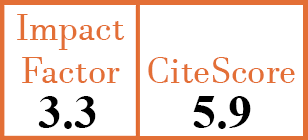Full Papers
Comparative study of elderly-onset rheumatoid arthritis and young-onset rheumatoid arthritis in a Colombian population: clinical, laboratory and HLA-DRB1 findings
N. Spinel-Bejarano, G. Quintana, R. Heredia, J.J. Yunis, J.E. Caminos, M.F. Garcés, F. Rondon, A. Iglesias-Gamarra
CER5234
2013 Vol.31, N°1
PI 0040, PF 0046
Full Papers
Free to view
(click on article PDF icon to read the article)
PMID: 22935200 [PubMed]
Received: 15/11/2011
Accepted : 16/03/2012
In Press: 06/08/2012
Published: 28/01/2013
Abstract
OBJECTIVES:
Elderly-onset rheumatoid arthritis (EORA) is considered to have different features in relation to young-onset rheumatoid arthritis (YORA). However, results from different evaluated populations worldwide have been inconsistent and in Colombia there are no known descriptions of the differences between these pathologies. The aim of this paper is to compare the clinical, laboratory and immunogenetic features in a Colombian population suffering with EORA and YORA.
METHODS:
EORA (≥65, n=104) and YORA (<65, n=96) patients were compared regarding clinical, laboratory and HLA-DRB1 alleles features. A control group without rheumatoid arthritis over 65 (n=179) was used to compare the HLA-DRB1 alleles. All patients met the ACR/1987 criteria for rheumatoid arthritis and the clinimetric index was calculated.
RESULTS:
The gender ratio (female/male) was 1.8:1 in EORA. In both groups, the main onset pattern of disease was an insidious polyarticular onset (p=0.35). EORA was characterised by more distal-proximal joint involvement in comparison to YORA (p=0.0007). In EORA, the rheumatoid factor and anti-cyclic citrullinated peptide (anti-CCP) antibodies frequency was close to 50%, lower than in YORA (63%). In both groups, the DAS28 and HAQ-DI score was higher than 6 and 1, respectively. The HLA-DRB1*0403 and *1402 frequency was significantly higher in EORA than in YORA. Also, the shared epitope (p=0.0392), HLA-DRB1*01 (p=0.0068) and *0101 (p=0.0151) were associated with an anti-CCP positivity and the HLA-DRB1*0403 is protective for the anti-CCP presence in EORA (p=0.0201).
CONCLUSIONS:
EORA is characterised by a different clinical presentation and HLA-DRB1 alleles with respect to YORA. HLA-DRB1*0403 and *1402 are significantly more frequent in EORA compared to YORA.


